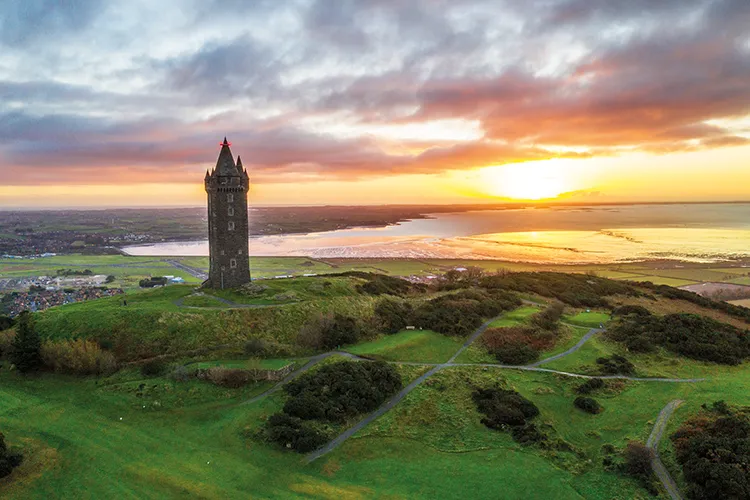
Rory Walsh spies a Highland pyramid or perhaps a giant limpet shell
Discovering Britain
View • Rural • Scotland • Web Guide
Ever since Dr No premiered in 1962, the James Bond movies have thrilled audiences with increasingly elaborate stunts and exotic locations. Yet one of their most evocative scenes portrays 007’s visit to the Scottish Highlands. Skyfall concludes with Bond driving back to his boyhood home. His silver Aston Martin trickles like a raindrop through the greens, browns and purples of Glen Coe. Mist swirls. Brooks babble. Daniel Craig’s taciturn expression becomes one of the least rugged features in the landscape.
At the head of Glen Etive, the car passes between two dark peaks: Buachaille Etive Beag and Buachaille Etive Mòr. Together, they’re known as the ‘Herdsmen of Etive’. Approach, like Bond, from the northeast and Buachaille Etive Mòr is unmistakable. It looks like a massive limpet shell or a lost Egyptian pyramid. The mountain’s triangular outline is a child’s drawing made life, but the story behind it is more dramatic than any action movie.
Glen Etive was formed by huge volcanic eruptions. Around 420 million years ago, tectonic movement pushed up vast swathes of rock, creating the mountain chains that lace northern Scotland. Millennia of erosion has reduced their original heights. Today, Buachaille Etive Mòr stands at 1,021 metres tall, but would originally have been about the size of Mount Everest.
DISCOVER MORE ABOUT BRITAIN
Besides changing size, ‘the Herdsman’ has changed shape. Compared with its surroundings, Buachaille Etive Mòr looks gnarled and sharp. Glen Etive is a glacial valley, carved out during the ice ages of the past 2.5 million years. The top of Buachaille Etive Mòr stood above the level of the glaciers. Rainwater on the summit entered cracks inside the rock. This water repeatedly froze and thawed, which created pressure that fractured the rock into jagged peaks. Buachaille Etive Mòr has four distinct peaks; the tallest, Stob Dearg, creates the mountain’s pyramid profile.
This distinctive appearance, as well as its location by the A81, have long made Buachaille Etive Mòr popular with climbers and hikers. In recent years, movie tourism and social media have encouraged further footfall. Buachaille Etive Mòr has become probably the most photographed mountain in Scotland. Locals and conservation groups have expressed concern about the impact upon the glen, such as littering and fly-tipping. Fire, ice, wind and rain have all shaped Buachaille Etive Mòr. Millions of years later, the area around this Highland pyramid is still being shaken and stirred.

Go to the Discovering Britain website to find more hikes, short walks, or viewing points. Every landscape has a story to tell!








